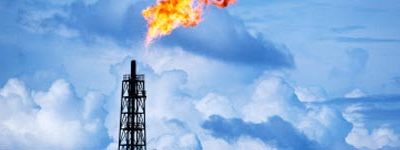%
Jubak’s Picks Performance 1997-2019
Jubak’s Picks
Buy and hold? Not really.
Short-term trading?
Not by a long shot.
So what is the stock-picking style of The Jubak’s Picks portfolio?
Click to expand...
Click to View the Jubak’s Picks Portfolio
I try to go with the market’s momentum when the trend is strong and the risk isn’t too high, and I go against the herd when the bulls have turned piggy and the bears have lost all perspective. What are the results of this moderately active — the holding period is 12 to 18 months — all-stock portfolio since inception in May 1997? A total return of 584% as of December 31, 2019. That compares to a total return on the S&P 500 stock index of 335% during the same period.
%
Top 50 Stocks Performance 2019
Top 50 Stocks
This long-term, buy-and-holdish portfolio was originally based on my 2008 book The Jubak Picks.
Trends that are strong enough, global enough, and long-lasting enough to surpass stock market averages.
Click to expand...
Click to view the Top 50 Stocks Portfolio
In The Jubak’s Picks Portfolio I identified ten trends that were strong enough, global enough, and long-lasting enough to give anyone who invested in them a good chance of beating the stock market averages.
To mark the publication of my new book on volatility, Juggling with Knives, and to bring the existing long-term picks portfolio into line with what I learned in writing that book and my best new ideas on how to invest for the long-term in a period of high volatility, I’m completely overhauling the existing Top 50 Picks portfolio.
You can buy Juggling with Knives at bit.ly/jugglingwithknives
%
Dividend Income Performance 2021
Dividend Income
Every income investor needs a healthy dose of dividend stocks.
Why bother?
Why not just concentrate on bonds or CDs?
Click to expand...
Click to view the Dividend Income Portfolio
Because all the different income-producing assets available to income investors have characteristics that make them suited to one market and not another. You need all of these types of assets if you’re going to generate maximum income with minimum risk as the market twists and turns.
For example: bonds are great when interest rates are falling. Buy early in that kind of market and you can just sit back and collect that initial high yield as well as the capital gains that are generated as the bonds appreciate in price with each drop in interest rates.
CDs, on the other hand, are a great way to lock in a yield with almost absolute safety when you’d like to avoid the risk of having to reinvest in an uncertain market or when interest rates are crashing.
Dividend stocks have one very special characteristic that sets them apart from bonds and CDs: companies raise dividends over time. Some companies raise them significantly from one quarter or year to the next. That makes a dividend-paying stock one of the best sources of income when interest rates start to rise.
Bonds will get killed in that environment because bond prices will fall so that yields on existing bonds keep pace with rising interest rates.
But because interest rates usually go up during periods when the economy is cooking, there’s a very good chance that the company you own will be seeing rising profits. And that it will raise its dividend payout to share some of that with shareholders.
With a dividend stock you’ve got a chance that the yield you’re collecting will keep up with rising market interest rates.
But wouldn’t ya know it?
Just when dividend investing is getting to be more important—becoming in my opinion the key stock market strategy for the current market environment—it’s also getting to be more difficult to execute with shifting tax rates and special dividends distorting the reported yield on many stocks.
I think there’s really only one real choice—investors have to pull up their socks and work even harder at their dividend investing strategy. That’s why I revamped the format of the Dividend Income portfolio that I’ve been running since October 2009. The changes aren’t to the basic strategy. That’s worked well, I think, and I’ll give you some numbers later on so you can judge for yourself. No, the changes are designed to do two things: First, to let you and me track the performance of the portfolio more comprehensively and more easily compare it to the performance turned in by other strategies, and second, to generate a bigger and more frequent roster of dividend picks so that readers, especially readers who suddenly have a need to put more money to work in a dividend strategy, have more dividend choices to work with.
Why is dividend investing so important in this environment? I’ve laid out the reasons elsewhere but let me recapitulate here. Volatility will create repeated opportunities to capture yields of 5%–the “new normal” and “paranormal” target rate of return–or more as stock prices fall in the latest panic. By using that 5% dividend yield as a target for buys (and sells) dividend investors will avoid the worst of buying high (yields won’t justify the buy) and selling low (yields will argue that this is a time to buy.) And unlike bond payouts, which are fixed by coupon, stock dividends can rise with time, giving investors some protection against inflation.
The challenge in dividend investing during this period is using dividend yield as a guide to buying and selling without becoming totally and exclusively focused on yield. What continues to matter most is total return. A 5% yield can get wiped out very easily by a relatively small drop in share price.
Going forward, I will continue to report on the cash thrown off by the portfolio—since I recognize that many investors are looking for ways to increase their current cash incomes. But I’m also going to report the total return on the portfolio—so you can compare this performance to other alternatives—and I’m going to assume that an investor will reinvest the cash from these dividend stocks back into other dividend stocks. That will give the portfolio—and investors who follow it—the advantage of compounding over time, one of the biggest strengths in any dividend income strategy.
What are some of the numbers on this portfolio? $29,477 in dividends received from October 2009 through December 31, 2013. On the original $100,000 investment in October 2009 that comes to a 29.5% payout on that initial investment over a period of 39 months. That’s a compound annual growth rate of 8.27%.
And since we care about total return, how about capital gains or losses from the portfolio? The total equity price value of the portfolio came to $119,958 on December 31, 2012. That’s a gain of $19,958 over 39 months on that initial $100,000 investment or a compound annual growth rate of 5.76%.
The total return on the portfolio for that period comes to $49,435 or a compound annual growth rate of 13.2%.
How does that compare to the total return on the Standard & Poor’s 500 Stock Index for that 39-month period? In that period $100,000 invested in the S&P 500 would have grown to $141,468 with price appreciation and dividends included.) That’s a total compounded annual rate of return of 11.26%.
That’s an annual 2 percentage point advantage to my Dividend Income portfolio. That’s significant, I’d argue, in the context of a low risk strategy.
Portfolio Related Posts
My Dividend Portfolio returned 26.79% in 2016
If you had bought the stocks in my Dividend Portfolio on December 31, 2015–or when I added them to this portfolio during 2016 in the cases of Coach (COH), Qualcomm (QCOM), VanEck Vectors Preferred Securities (excluding Financials) ETF (PFXF), and Kinder Morgan (KMI)–you would have seen at December 30, 2016 prices a gain of 22.1%. Dividends on the portfolio came to 4.73%. That brought the total return for the year for this group of 15 stocks to 26.79% Pretty good, I think, in a year when the Standard & Poor’s 500 Stock Index returned 9.54% or 11.152% with dividends reinvested.
Pipeline OKS to be one of first beneficiaries as OPEC’s production cuts raise oil output from U.S. shales
Tracing this chain of cause and effect is pretty simple: OPEC cuts oil production to raise oil prices; U.S. shale producers with low costs increase drilling and output (by a forecast 250,000 barrels a day in 2017); U.S. pipeline MLPs (master limited partnerships) see higher volumes and higher revenues; MLPs raise distributions; income investors smile. This process is going to take a while, depending on what shale geologies a pipeline system serves. Some pipeline companies will see higher volumes by the middle of 2017. Others may have to wait until 2018.
Incyte ended 2016 with big news; begins 2017 the same way–and stock climbs 9.44% on the day
Incyte (INCY) ended 2016 with a big deal. And then the company began 2017 by announcing a clinical development program with Merck (MRK)
Qualcomm’s really, really small chip is a big, big deal
Qualcomm (QCOM) announced a new Snapdragon chip (Snapdragon 835) at the Consumer Electronics Show in Las Vegas Tuesday, January 3. The chip will take up about 35% less space than last year’s Snapdragon chip in devices such as smartphones and use 25% less power.
Shares of Jubak Pick Acadia Pharmaceuticals pop 11% on buyout rumors
Update January 4. Shares of Acadia Pharmaceuticals (ACAD) were up 12% this morning, January 4, before closing with a gain of 11.02% to $31.94. The action came on rumors that Pfizer (PFE) or another big drug company would make a bid for the biotech on the strength of its lead drug Nuplazid
What’s the “quid” for Softbank’s “quo”?
Softbank (SFTBY) has been in the headlines a lot recently–usually after an announcement by President-elect Donald Trump. There was Softbank CEO and chairman Masayoshi Son emerging after a meeting with Trump at Trump Tower to announce that Softbank would invest $50 billion (of $100 billion raised in a new venture fund) in the United States and create 50,000 jobs in the U.S
Vale sells fertilizer assets to Mosaic–time for this long-term stock pick to pay down some debt
Brazil’s Vale (VALE) has agreed to sell it fertilizer assets to Mosaic (MOS) for $2.5 billion in cash and stock. The price at 15 times trailing-12-month EBITDA (earnings before taxes, interest, depreciation, and amortization) is a good one given the continued challenging fundamentals in the global fertilizer sector.
Raising my target price on Jubak Picks Cheniere Energy
The Cheniere Energy story is pretty simple. The company got the first license to export liquified natural gas from the United States, locked in long-term contracts for its Sabine Pass and Corpus Christi terminals, and then waited for revenue to flow in as the individual production trains at the two plants kicked in. What investors needed was patience–and sometimes strong nerves–as they contemplated the mountain of debt that Cheniere had used to fund its facilities and the fact that natural gas prices had tanked since the heady days when the company began to build its facilities. The third quarter of 2016, then marked something of a turning point for the company.









